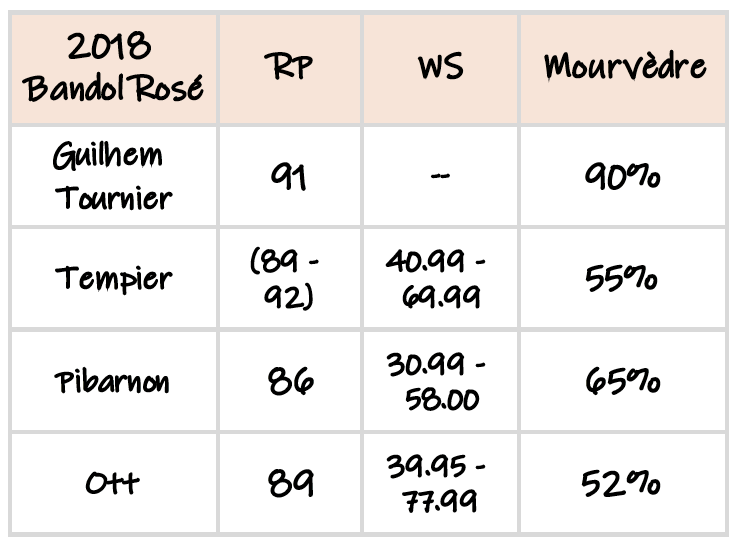The Critics’ Rosé
There’s good reason people brag about drinking "back vintages" of Tempier Rosé: It's a cellar-worthy wine that happens to be a rosé.
The same goes for Bandol Rosé from Château Guilhem Tournier. Since we started importing it many years ago, it has garnered a reputation among sommeliers and retailers for its amazing quality and age-worthiness.
Tournier and Tempier have a few things in common, such as being neighbors overlooking the Bay of Bandol.
They also share heritage. During WWII, Tournier's grandfather and Lucien Peyraud trekked to Beaucastel and Simone for Mourvèdre clippings to restore their vineyards ravaged by Phylloxera and war.
With such prestigious vines and a very small (4ha) vineyard, Tournier makes Mourvèdre the centerpiece of his wines.
You could even call Tournier's dedication to Mourvèdre extreme. He's one of the few who use more than 60% in their Rosés—Tournier's goes to 90%—and even fewer who do it successfully. You can see this in Robert Parker's ratings of 2018 Bandol Rosés.
Few Bandol producers use as much as Tournier does because the variety is finicky and expensive to farm.
And, when they do use a lot of Mourvèdre, it often comes with a much higher pricetag. For example: Tempier's high end Bandol Rouge, Cabassaou, has 95% Mourvèdre and retails for $135--more than double Tempier Bandol (which has 75% Mourvèdre).
Part of Tournier's success comes from being a farming purist. Organic and biodynamic, of course; horse and plow. And super light touch winemaking: native yeasts, filtering and fining with plant based material—Vegan.
With all that TLC, no wonder Guilhem Tournier Rosé gets top marks from Robert Parker—even higher than the appellation elite.
The best part? Guilhem Tournier Rosé '18 can retail for well below peers.
Pick some up before the warm weekend—I guarantee your customers will thank you.



